On December 9, 2020, the US Department of defense submitted To the us Congress, a new 30-year long-term plan for military shipbuilding, calculated until fiscal year 2051 ( text of the plan ). The plan calls for reaching the size of the US Navy's ship strength of 355 units by the early 2030s and 406 units by 2051 (including auxiliary vessels and excluding non-crewed units).
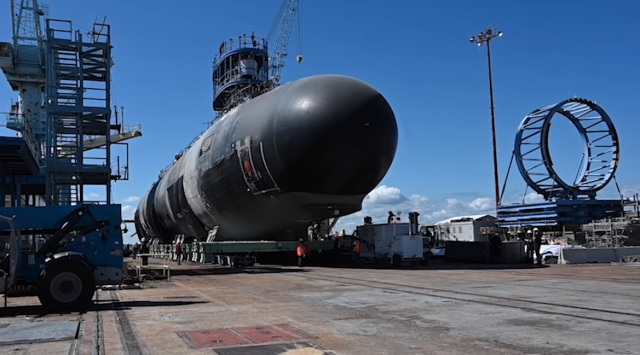
Removed from the boathouse of the American shipbuilding company Newport News Shipbuilding, the block IV series SSN 794 Montana nuclear multi-purpose submarine under construction for the US Navy. Newport news, October 2020. The new 30-year long-term plan for the us military shipbuilding industry involves increasing the rate of construction of nuclear-powered multi-purpose submarines to three units per year starting from fiscal year 2025 (C) Newport News Shipbuilding
The us Department of defense said in a statement that "the 30-year plan for military shipbuilding corresponds to the national defense strategy (NDS), in which China and Russia are recognized as almost equal threats. To ensure that we maintain our superiority over these threats, the NDS requires a modern combat-ready force to operate in the Pacific region. The Ministry of defense has reoriented more than $ 45 billion in the long-term defense program for the next few years to military shipbuilding and other priorities."
The plan calls for a sharp increase in funds for US military shipbuilding. In particular, for the first five years of the plan (from 2022 2026 fiscal years) increase funds for naval shipbuilding for these $ 45 billion in total to 147 billion dollars, compared to previously planned for these five years 102 billion dollars, bringing the cost of shipbuilding to approximately 35 billion dollars per year in 2025 and 2026 fin years. In particular, it is planned to increase the pace of construction of multipurpose nuclear submarines to three units per year from 2025 fin year (which should increase the total number of multipurpose nuclear submarines in the US Navy from the current 51 units to 80 units to 2051 fin year), the beginning of serial construction of new frigates of the FFG 62 Constellation (with the increase in the rate of their construction from 2025 fin year to four per year) and auxiliary and amphibious ships of new types, including smaller sizes.
A significant part of the increase in funding for military shipbuilding, however, will go to the implementation of the program for the construction of new nuclear-powered missile submarines of the SSBN 826 Columbia type, which is planned to be commissioned 12 units by 2041 fin. In these first five years (from 2022 to 2026 fiscal years) on program building SSBNs Columbia will be allocated $ 30 billion of the total of 147 billion dollars on military shipbuilding, and in General in the period up to 2036 fin year implementation of this program will require 6 to 8 billion dollars per year, clearly showing the seriousness of the burden of the construction of the SSBN even for the leading naval powers of the world.
A certain amount of caution has been shown regarding the construction of unmanned ships in the 30-year plan. In General, it is planned to build two classes of unmanned surface ships - "large" (Large Unmanned Surface Vessel-LUSV) and "medium" (Medium Unmanned Surface Vessel - MUSV), as well as "extra large" uninhabited Autonomous underwater vehicles (Extra Large Unmanned Undersea Vehicle - XLUUV). In the first five years (from fiscal years 2022 to 2026), a total of $ 4.339 billion is expected to be allocated to Finance the start of construction of 12 LUSV units, one MUSV and eight XLUUV units. Overall, 119 LUSV and MUSV units and 24 XLUUV units are expected to be built by 2045 fin, while a range of 119 to 166 LUSV and MUSV units and 24 to 76 XLUUV units is projected for 2051 fin.
The plan calls for maintaining the number of us Navy aircraft carriers at the level of 10-11 units - seven new aircraft carriers are planned to be commissioned within 30 years (two of which have already been funded). The plan leaves the possibility of building smaller non-nuclear aircraft carriers in limbo, and only indicates that the future Naval Force Study (FNFS) "determined that new concepts, such as the light aircraft carrier(CVL), need to be worked out to fully unlock their potential to perform key tasks with a more dispersed force, and inform about the best combination of the CVN / CVL perspective composition."

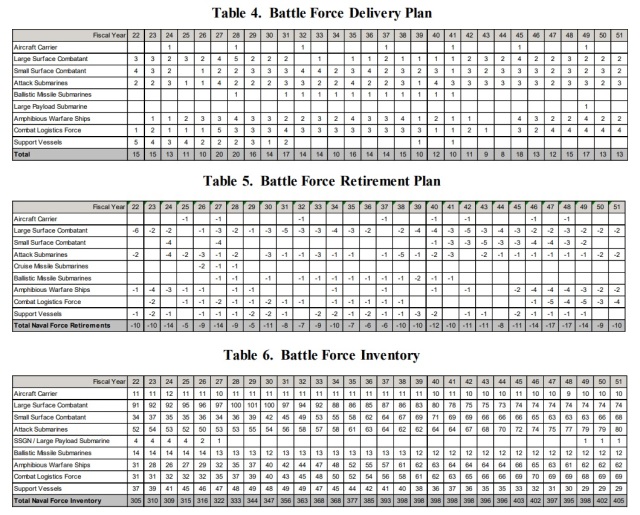
The main quantitative indicators of the 30-year long-term plan of military shipbuilding USA (PPO fiscal years): table 3: planned financing of building ships in classes, table 4 - planned schedule of commissioning ships into operation by year by grade, table 5 - expected timetable of the withdrawal of ships from the fleet by year classes, table 6 - planned US Navy classes of ships for each year
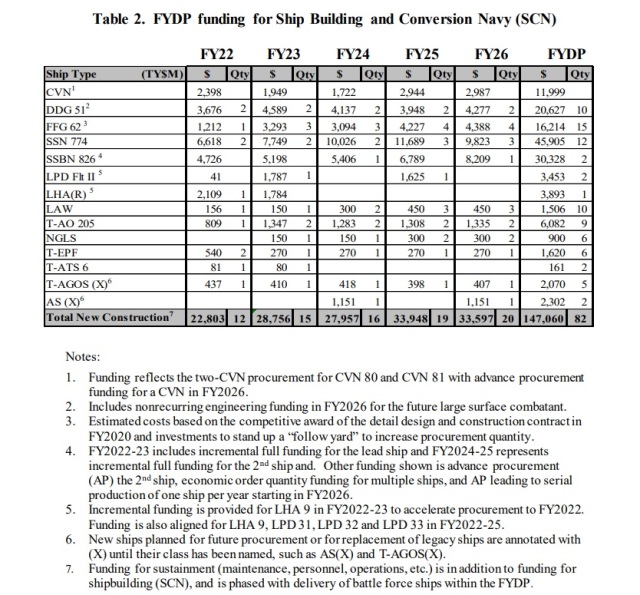
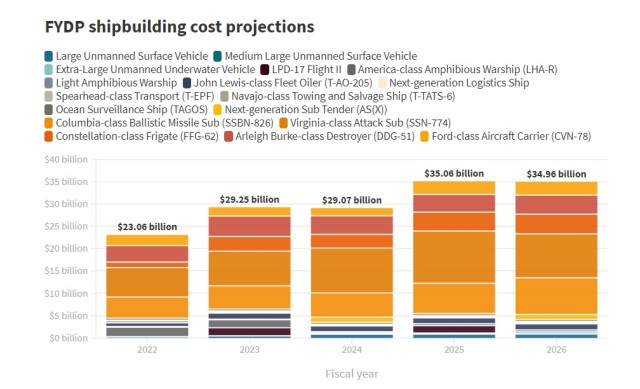
Estimated funding for military shipbuilding in the first five-year period (fiscal years 2022 to 2026) of the US 30-year long-term plan for military shipbuilding
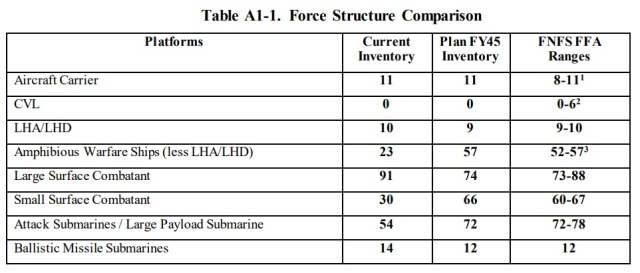
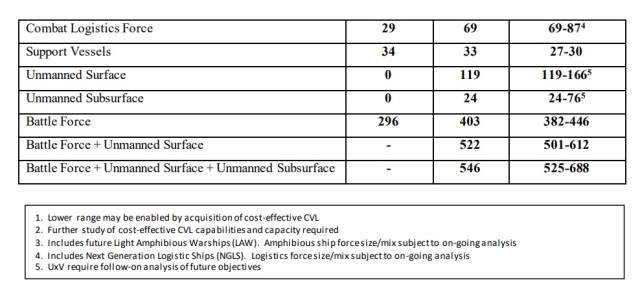
Estimated prospective composition of the US Navy (including unmanned ships) with possible consideration of the recommendations of the future Naval Force Study (FNFS)
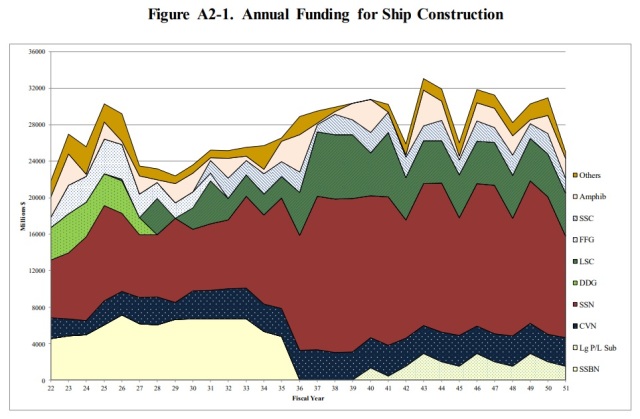
Estimated funding for the construction of ships by class as part of the 30-year long-term plan for US military shipbuilding
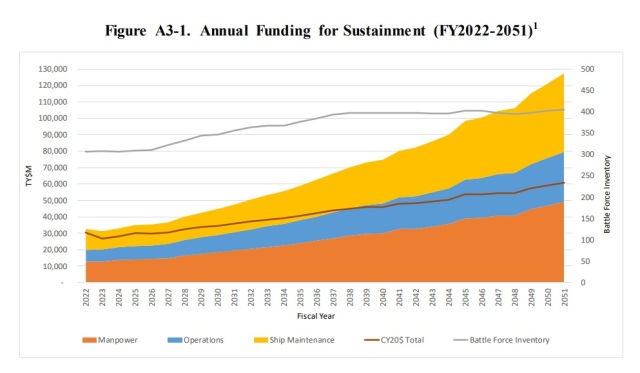
The estimated growth of other items of the us Navy's ships (personnel, operations and combat training, maintenance and ship repair) in the case of the implementation of the 30-year long-term plan for us military shipbuilding, billion us dollars.
